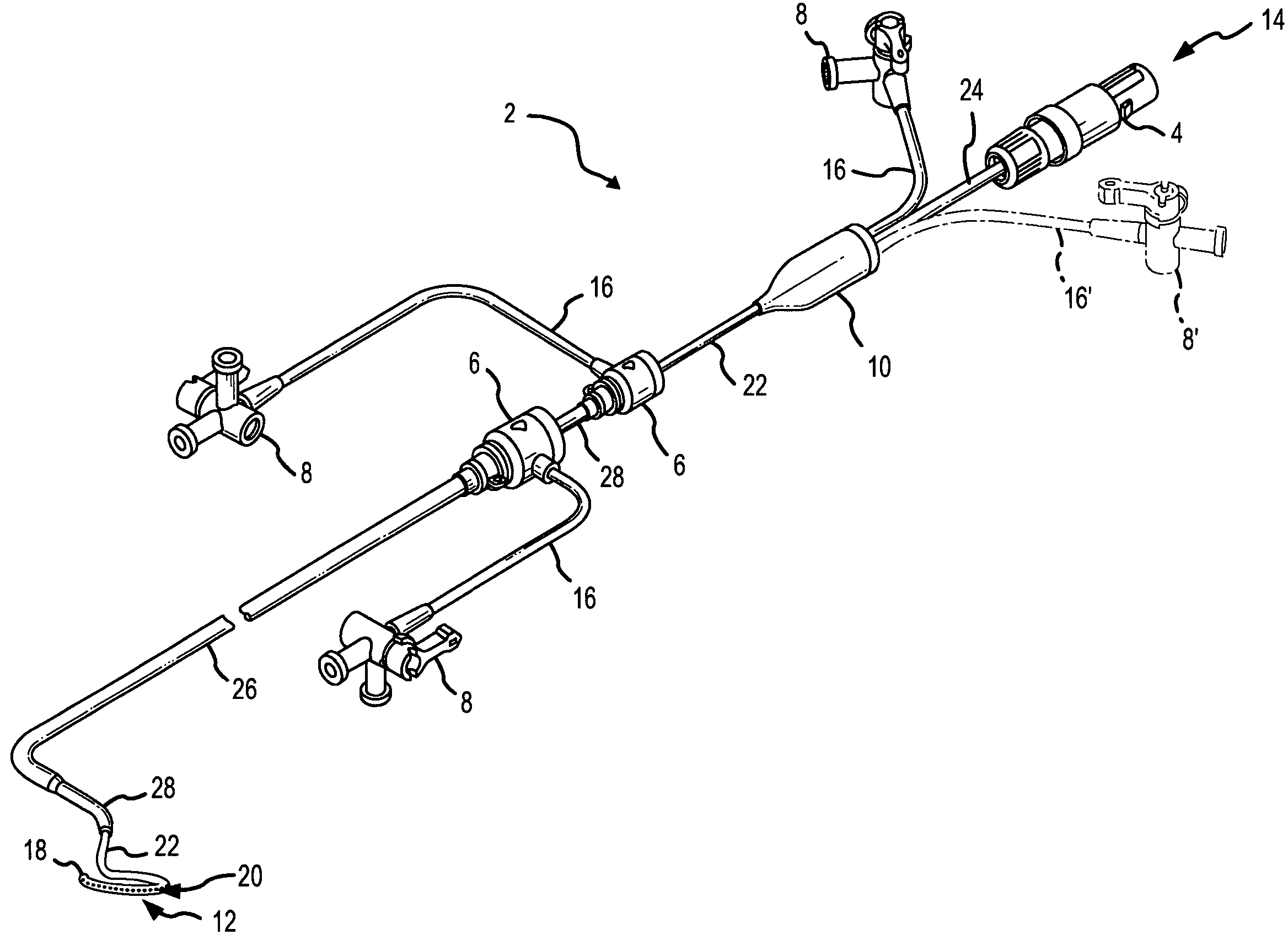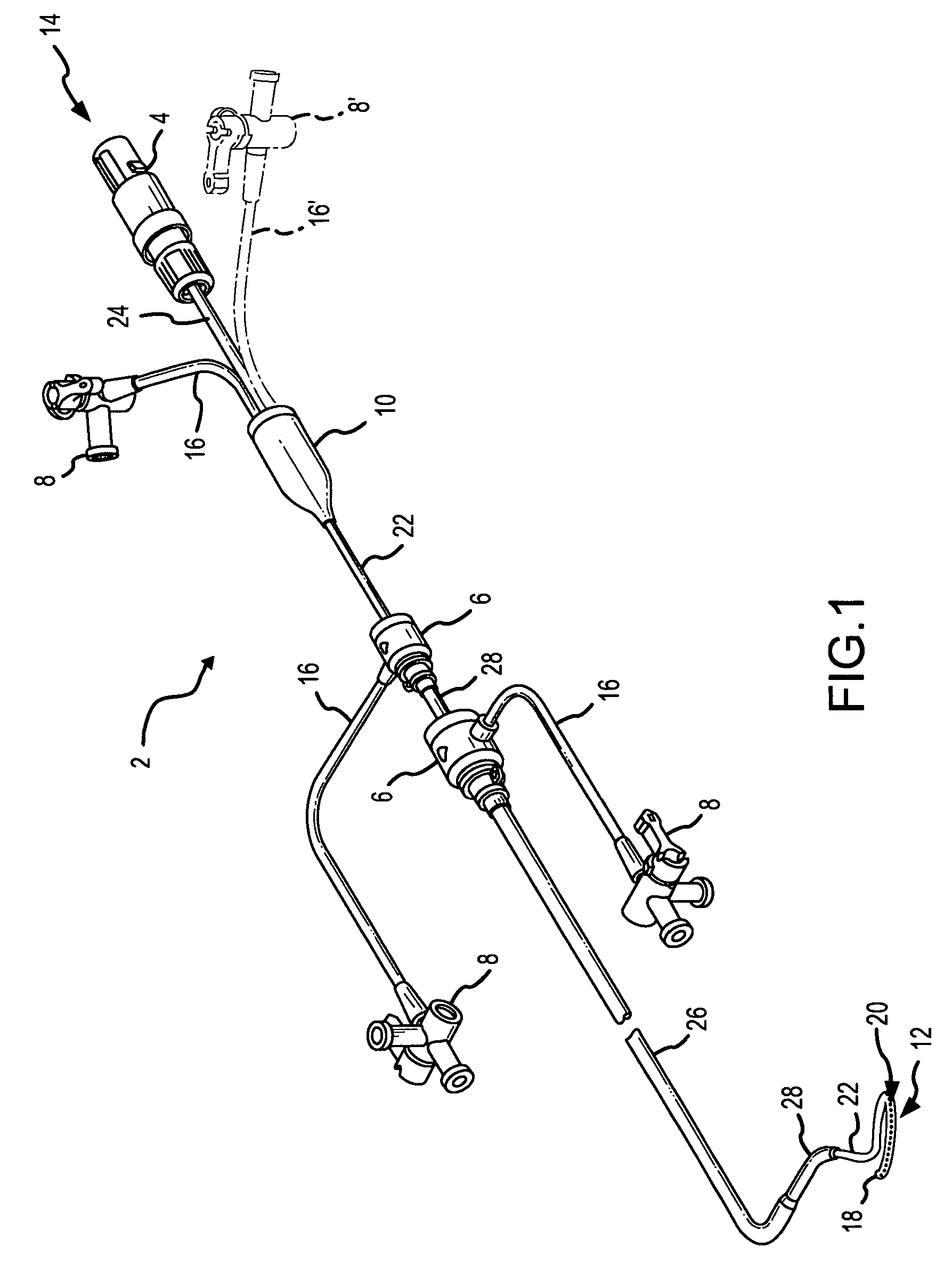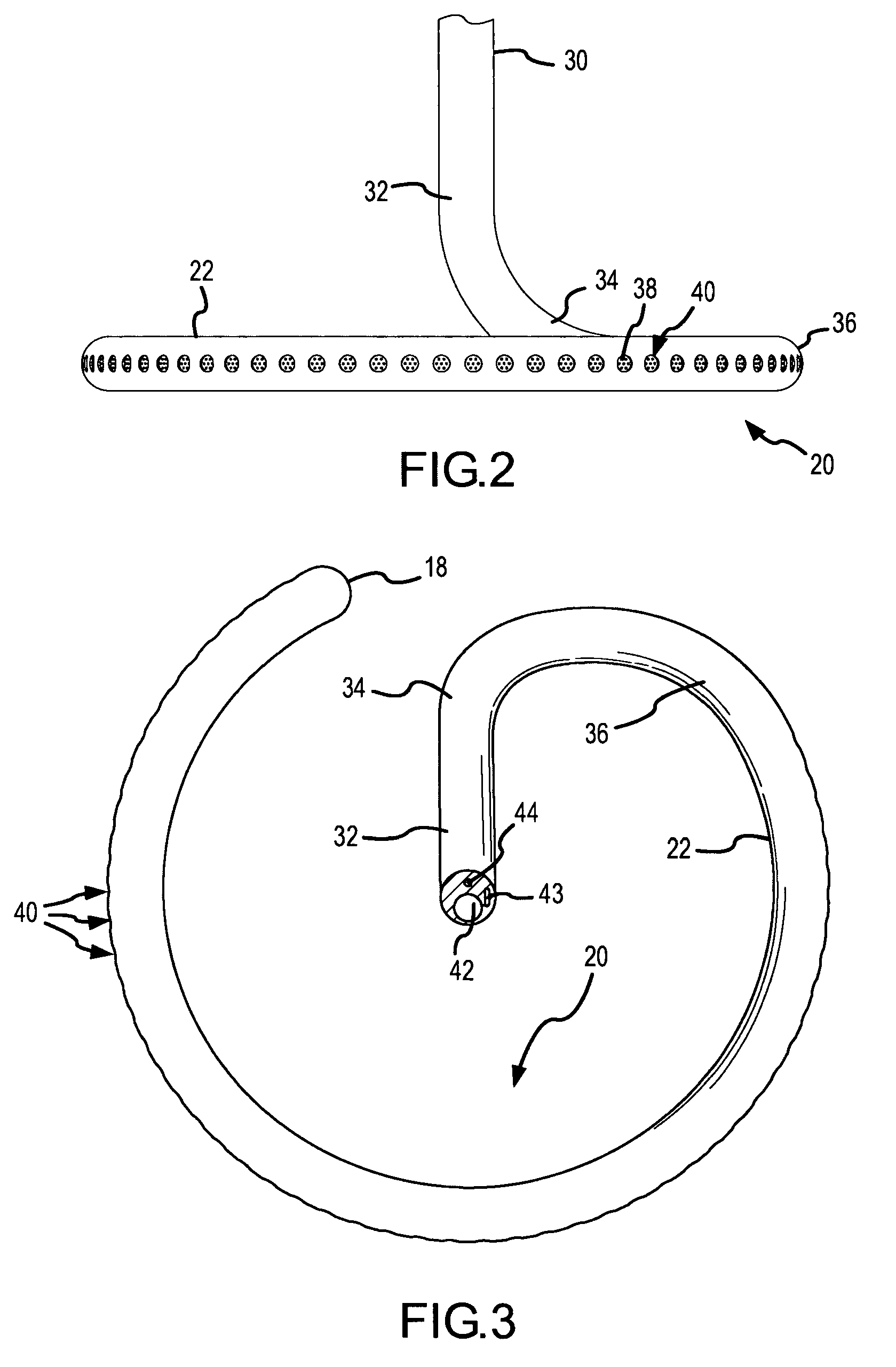Ablation catheter with adjustable virtual electrode
a virtual electrode and catheter technology, applied in the field of catheters with virtual electrode sections, can solve the problems of increasing the likelihood of thromboembolism, and significant patient discomfor
- Summary
- Abstract
- Description
- Claims
- Application Information
AI Technical Summary
Benefits of technology
Problems solved by technology
Method used
Image
Examples
Embodiment Construction
[0038]The present invention concerns an improved design for ablation catheters used, for example, in cardiac ablation procedures to produce linear lesions in cardiac tissue. The electrode structure on the distal end of the catheter of the present invention is generally termed a “virtual electrode.” In a virtual electrode design, ablation energy is primarily imparted to the target tissue via energy transfer through a conductive fluid medium escaping the distal end of the catheter rather than by actual contact of a traditional electrode with the tissue. The present invention is primarily directed to providing a variable length virtual electrode to allow a clinician to create lesions of varying length in the target tissue.
[0039]FIG. 1 is an isometric view of a catheter / introducer assembly 2 for use in conjunction with the present invention. A catheter 22 with a handle interface 4 at a proximal end 14 and an ablation electrode section 20, according to a generic embodiment of the present...
PUM
 Login to View More
Login to View More Abstract
Description
Claims
Application Information
 Login to View More
Login to View More - R&D
- Intellectual Property
- Life Sciences
- Materials
- Tech Scout
- Unparalleled Data Quality
- Higher Quality Content
- 60% Fewer Hallucinations
Browse by: Latest US Patents, China's latest patents, Technical Efficacy Thesaurus, Application Domain, Technology Topic, Popular Technical Reports.
© 2025 PatSnap. All rights reserved.Legal|Privacy policy|Modern Slavery Act Transparency Statement|Sitemap|About US| Contact US: help@patsnap.com



